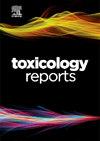Microplastics: A threat to Fetoplacental unit and Reproductive systems
Q1 Environmental Science
引用次数: 0
Abstract
Plastic pollution has become a pressing global environmental and public health challenge, raising significant concerns about its potential effects on human health. While extensive research has been conducted on micro- and nanoplastics (MNPs), there remains a critical gap in understanding how these plastic particles traverse the maternal-fetal interface and contribute to reproductive anomalies. This review aims to address this knowledge gap by examining the effects of MNPs on the fetoplacental unit, a vital structure that serves as the interface between the mother and fetus during pregnancy, as well as on the broader reproductive system. Traditionally viewed as a protective barrier safeguarding the fetus, emerging evidence suggests that the placenta may also act as a site for the accumulation of plastic particles, thereby compromising its function. A literature search was conducted using a combination of keywords on Google Scholar and PubMed including ’plastic particles affect the fetoplacental unit’, ’how plastic particles traverse the maternal-fetal contact’, and reproductive abnormalities induced by micro/nano-plastics’. Key studies show that plastic particles can traverse the maternal-fetal interface, potentially exposing developing fetuses to various harmful chemicals present in plastics, such as endocrine disruptors and persistent organic pollutants. Once in contact with the fetoplacental unit, these particles may trigger inflammatory responses, oxidative stress, and even epigenetic modifications. They also bioaccumulate in testes, altering spermatogenesis, spermatozoa morphology, testosterone production, body weights, and inflammation as reported in mice. Such disruptions can increase the risk of developmental and reproductive disorders in the fetus, suggesting that exposure to plastic particles may carry long-term health implications. Further studies highlight the particular vulnerability of the fetoplacental unit to plastic particles. The placenta has limited detoxifying capabilities and unique immunological regulation, making it especially sensitive to foreign particles. Identifying critical windows of susceptibility during pregnancy is germane, as exposure to plastic particles during these periods could have heightened effects on fetal development. This growing concern underscores the urgent need for comprehensive research into the mechanisms through which plastic particles impact the fetoplacental unit. Additionally, this review calls for stronger measures to mitigate plastic pollution and recommends health strategies aimed at protecting future generations from potential harm. It synthesizes recent findings on the ways in which these particles influence the fetoplacental unit and the broader reproductive system.
微塑料:对胎儿胎盘单位和生殖系统的威胁
塑料污染已成为一个紧迫的全球环境和公共卫生挑战,引起了人们对其对人类健康的潜在影响的重大关注。尽管对微塑料和纳米塑料(MNPs)进行了广泛的研究,但在了解这些塑料颗粒如何穿过母胎界面并导致生殖异常方面仍然存在重大差距。本综述旨在通过研究MNPs对胎胎盘单位的影响来解决这一知识空白,胎胎盘单位是妊娠期间母亲和胎儿之间的重要结构,也是更广泛的生殖系统。传统上,胎盘被认为是保护胎儿的屏障,但新出现的证据表明,胎盘也可能是塑料颗粒积聚的场所,从而损害其功能。利用谷歌Scholar和PubMed上的关键词组合进行了文献检索,包括“塑料颗粒影响胎胎盘单位”,“塑料颗粒如何穿越母胎接触”,以及微/纳米塑料引起的生殖异常。关键研究表明,塑料颗粒可以穿过母胎界面,可能使发育中的胎儿暴露于塑料中存在的各种有害化学物质,如内分泌干扰物和持久性有机污染物。一旦与胎胎盘单位接触,这些颗粒可能引发炎症反应,氧化应激,甚至表观遗传修饰。据报道,它们也在睾丸中生物积累,改变精子发生、精子形态、睾酮产生、体重和炎症。这种破坏会增加胎儿发育和生殖障碍的风险,这表明接触塑料颗粒可能会对健康产生长期影响。进一步的研究强调了胎儿胎盘单位对塑料颗粒的特别脆弱性。胎盘具有有限的解毒能力和独特的免疫调节,使其对外来颗粒特别敏感。确定孕期易感性的关键窗口期是至关重要的,因为在这些时期接触塑料颗粒可能会对胎儿发育产生更大的影响。这种日益增长的担忧强调了迫切需要对塑料颗粒影响胎儿胎盘单位的机制进行全面研究。此外,该报告呼吁采取更有力的措施来减轻塑料污染,并建议采取旨在保护子孙后代免受潜在危害的健康战略。它综合了这些颗粒影响胎儿胎盘单位和更广泛的生殖系统的方式的最新发现。
本文章由计算机程序翻译,如有差异,请以英文原文为准。
求助全文
约1分钟内获得全文
求助全文
来源期刊

Toxicology Reports
Environmental Science-Health, Toxicology and Mutagenesis
CiteScore
7.60
自引率
0.00%
发文量
228
审稿时长
11 weeks
 求助内容:
求助内容: 应助结果提醒方式:
应助结果提醒方式:


